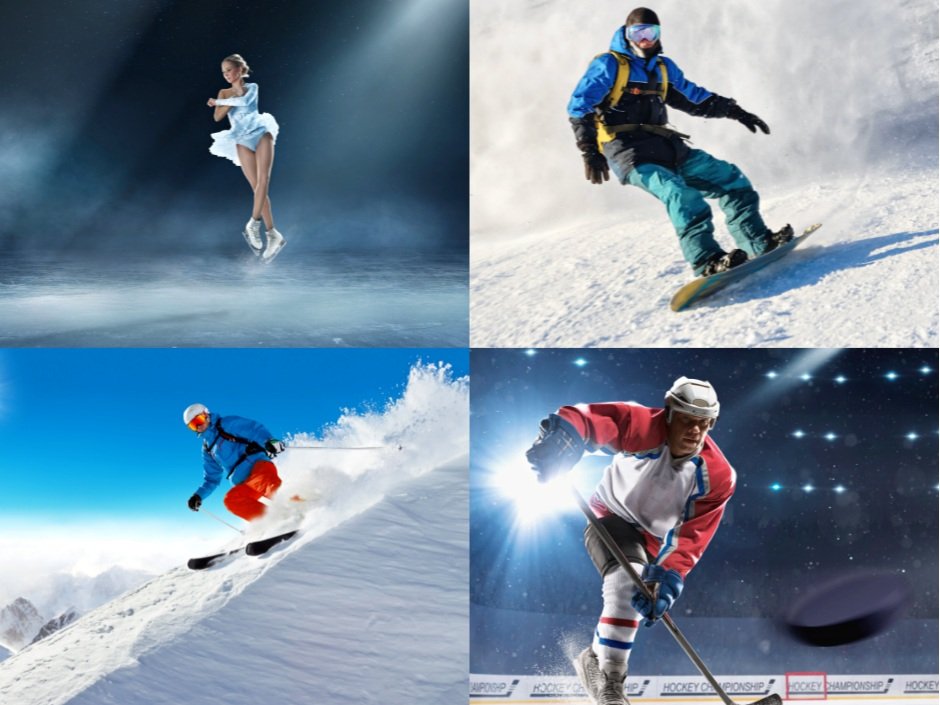Winter Sports Concussion Treatment
January is National Winter Sports Traumatic Brain Injury (TBI) Month. Winter sports, such as hockey, ice skating, snowboarding, skiing, snowmobiling, and sledding, are played with high velocity and impact potential on the hard surfaces of snow and ice, which can lead to accidents and injuries. Winter sports account for over 23,500 concussions in the United States each year. It is essential to take proper precautions to protect winter sports athletes and prevent concussions. Should a concussion occur, proper medical care is critical; physical therapists play an important role in winter sports-related concussion management and treatment.
Winter Sports & Traumatic Brain Injuries (TBIs)
The incidence of TBIs associated with winter sports continues to increase every year around the world. Winter sports brought in 200,000 injuries to hospitals, doctor’s offices, and emergency rooms in 2018 alone and contribute to over 23,500 concussions each year in the United States. Skiing, snowboarding, sledding, and hockey all involve high velocity and impact potential that can lead to a concussion. The hard-packed snow and ice on which these sports are played can lead to injuries; the majority of TBI incidents on ski slopes result from hitting the head on an object or on the snow.
The most common type of traumatic brain injury is the sports-related concussion (SRC). A sports-related concussion can result from a direct blow to the head, face, neck, or elsewhere in the body that transmits force to the head during play of sport. Concussions can lead to physical, cognitive, and behavioral symptoms that vary depending on which area of the brain is affected and injured. Symptoms can start immediately or soon after an injury and may evolve over the following hours and days.
Common symptoms of concussions include:
Headache or migraine
Nausea and vomiting
Slurred speech
Balance issues and dizziness
Ringing in the ear
Double or blurred vision
Trouble sleeping and concentrating
Memory issues
Irritability
Sensitivity to light and noise
Physical Therapy for Winter Sports Concussion
Following a concussion, it is critical to have a full medical evaluation of the injured athlete and establish a safe, customized plan of treatment for the concussive patient to ensure a thorough recovery and gradual, safe return to sport. Physical therapists can effectively manage concussion injuries through evidence-based treatment and a careful, personalized rehabilitative program.
The therapist conducts an assessment to evaluate the patient’s symptoms, performs a post-concussion system inventory of the cervical spine and neck and a vestibular exam, and conducts an exertion treadmill test to measure the patient’s tolerance for exercise and to properly prescribe graded aerobic exercise as part of the treatment protocol.
The therapist designs a graded treatment program to allow the concussive patient to progressively increase the duration and intensity of exercise to make sure there is no return of symptoms with physical exertion.
Physical therapy treatment after a concussion can include vestibular and vision rehabilitation, balance testing and training, manual therapy and neck pain treatment, and graded aerobic exercise. The therapist guides the athlete through gradual, sub-symptom exercise training, which has been shown to help shorten recovery time and help the brain adapt to the increased physiological demands of activity over time, in a controlled environment with careful monitoring.
Preventing Winter Sports-Related Concussion
It is critical to take the proper precautions to minimize the risk of winter sports-related concussions.
Here are 6 tips to prevent injury:
Wear protective equipment, particularly a well-fitting helmet. Use a helmet with a strong outer shell and shock absorption layer. Ensure that the helmet is specifically designed for your sport. Wear padding for other body parts, such as arms and legs (hockey players) and goggles to protect your eyes when skiing and snowboarding.
Ensure your gear is properly maintained as defective gear can contribute to injury. Check your skis, snowboard, ice skates, and sled to make sure they are working properly.
Dynamically warm up your muscles to prepare your muscles for exercise. When temperatures are low, muscles tighten and blood vessels contract, which contributes to muscle tiredness and cramping and can lead to injury.
Be aware of your surroundings, keeping your eye out for any obstacles that could lead to a fall and injury. Check for grooves or notches in the ice and stay toward the center of the slope.
Take lessons in your sport to ensure you are using proper form and don’t push beyond your experience level, particularly on the ski and snowboarding slopes.
Seek out immediate medical care following an injury or concussion and work with a physical therapist during recovery.
